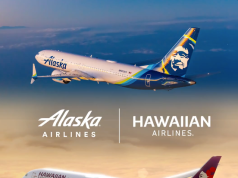If the first half of “year 200o’s” first decade marked the preeminence of search engine and social media marketing on the Web, the second half stood for the era of Search Marketing Analytics, analyzing the payoff from online to offline. By revealing the best insights on Web-based performance, the epoch promises to explain how to bridge initial online interaction with the final sale, and in more ways than one, including interactions with your company and sales agent over the telephone.
the second half stood for the era of Search Marketing Analytics, analyzing the payoff from online to offline. By revealing the best insights on Web-based performance, the epoch promises to explain how to bridge initial online interaction with the final sale, and in more ways than one, including interactions with your company and sales agent over the telephone.
This year, the gap may finally be closing on the single marketing metric that has gone missing in the marcomm mix when it comes to tracking Web visitors from keyword search and social media referrals. The missing evidence consists of a set of fingerprints, those left by a motivated customer who picks up the phone. The trail has been cold along the telltale path that leads from a search engine result to a landing page to a telephone call inquiring about the purchase of a product or service, requesting more information or registering as a lead. Surprisingly, neither Google Analytics, Omniture, WebTrends, ClickTracks or the other leading analytics vendors have yet been able to bind the path between the individual keyword that triggers (or leads to) a phone call “event” and measure what happens as a result.
Bridging the path between the high-value Web click and the telephone is the mission of ClickPath, a Puget Sound pioneer in the field that takes its integral role in the Web sales continuum very seriously.
We spoke with ClickPath product manager, Rolland Gregg, and director Mike Christensen about what makes ClickPath a leader in tieing-up the line that leads from online to phone line.
Seattle24x7: Can you give us a short history of ClickPath up to the moment you found your “calling”?
Christensen: ClickPath was founded a little over four years ago as a full-service search agency. We observed early on that several of our clients were spending hundreds of thousands of dollars for their paid search to drive conversions not just to a shopping cart sale or a contact form but to something else — the telephone.
There would be a phone number on the Website that appeared to be proving very useful because the tendency was for a higher close rate over the phone, not to mention a greater up-sell opportunity and a better orientation overall by simply connecting visitors with a warm body on the other end of the line. Our clients wanted to consolidate and improve that conversion process.
When it came to paid searches and keyword activity, we could also see which terms were driving shopping cart sales or contact forms, but not which ones were driving the phone call. We put a very talented development team to work on creating an algorithm that would allow us to show performance down to keyword-level granularity; across all keywords, and do so using only a small amount of toll free numbers.
Seattle24x7: Around this time you connected with another Puget Sound firm by the name of Who’s Calling?
Christensen: Once we realized we had our solution in hand, it was important for us to find a telephony provider that had a reliable background as it related to call-tracking. As the pioneer of the call-tracking industry, Who’s Calling were the people we wanted to do business with.
Seattle24x7: How are you able to tie together search keywords and phone numbers?
Christensen: In overview, we use a patented technology called Dynamic Number Insertion or DNI. When a search takes place and a clickthrough occurs on a sponsored link, a unique toll-free number that is unique to not only that particular search engine, but also to the keyword for that particular search engine, is displayed on the client’s webpage. We don’t create a special landing page or use reverse proxy — we work with the client’s existing advertising. When a phone call hits the Who’s Calling switch, it engages within our system so that we can track the call back to the exact keyword responsible .
Seattle24x7: Is the algorithm based on a kind of randomization of numbers or probability?
Gregg: Let’s say you have 10,000 keywords or even 100,000 in your campaigns (it doesn’t really matter). At any given time, there is a much smaller percentage of those that are performing. Maybe 1 to 2 to 3 percent are consistent performers.
So what we do is we set up pools of numbers where the toll free numbers rotate. It’s a smart system, and it’s a learning system, so that we are able to know at any given time how many numbers that we need to have in those pools.
Seattle24x7: Does your system tap into the Google AdWords API or are you operating outside of that system from a reporting standpoint?
Christensen: Right now we are completely independent of the Google API , or any other outside systems . However, API’s are something that we’re moving towards in terms of capturing cost analysis and cost-per-click, in real time, within our reports. But this is not something we are reliant on.
Also note, we are a cookie-based solution. It’s basically a session-based solution so we’re not reliant on cookies. In technical terms, we track the velocity of the click-through meaning we track how many clickthroughs are coming through and we monitor to make sure that there are enough toll-free phone numbers to serve that amount of traffic at any given time. We allow for extra toll free numbers to be available in case holiday traffic increases, extra e-commerce, special marketing initiatives, etc.
Seattle24x7: And the ClickPath is strictly based on going offline to a telephone as compared to clicking on a phonelink or initiating the call via the website.
Christensen: Correct. There’s no click-to-call functionality. The toll-free number stays on the site and follows you around the site so that you could be spending a half an hour looking over the kind of truck that you want to buy, and the phone number follows you around as a call to action. At any given moment, whether a potential customer has cold feet about using a credit card or questions on shipping, whatever the need, the personalized toll free number enables the advertisers’ sales people to engage in the sales process and generate a potentially higher average ticket value, a higher close percentage.
Seattle24x7: ClickPath can also track the referring domains so, if you have say an affiliate referral or something like that, is that accommodated as well?
Gregg: We can have Dynamic Number Insertion happen for any clickable event that we’ve apportioned to our client’s website. So, if you can click-through on the Internet, we can present that visitor with a unique number so that the client knows exactly where you came from; whether the link is paid or not. You can even track directory listings to see how much traffic you’re getting from organic as well.
Seattle24x7: Can you tell us about a real world case study that exemplifies the service in action?
Christensen: One of the greatest success stories for us has been a legacy client who has been with ClickPath literally from the beginning, a company called Merchant Warehouse, based out of Boston, Massachusetts. In their own words, ClickPath has reduced [their] cost-per-click over 40 percent and increased traffic 250 percent. Merchant Warehouse, TSI and other ClickPath clients have seen how certain keywords drive different types of conversions. So not only are they now optimizing awhich keywords are driving a particular kind of conversion, or affecting any kind of positive conversion trend, but now they’re going in deeper to look at the dollar values of those types of conversions and doing the sub-optimization to really get the desired dollar level.
Seattle24x7: And you’re using phone tracking for banner ads and rich media as well?
Gregg: Yes, let’s say you identify, I’ve got a banner ad and I’m paying ‘x’ amount of dollars. I want to see if it’s getting me any traffic and what is happening with that traffic. We can help you to set up tracking parameters in desired destination URLs that tell our system to serve up the toll-free number that we’ve already identified (because,for instance, you’ve told us that you want to track the Seattle Times banner ad). Anybody who clicks on that banner ad is going to get to the appropriate toll-free number. And if they decide to convert, we can tell you that you got this clickthrough, at this time and it converted at this time.
Seattle24x7: What else is telephony bringing to Web marketing?
Gregg: Because we have Who’s Calling as our telephony partner on the backend of the system, we have the power of call recording. There’s name, address and zip code that we can attribute to every phone call that comes in. That kind of capability changes the game entirely when we can look at the type of consumer that our clients are engaging with and really use that information for them to come up with very critical marketing strategies.
Christensen: When calls come in, one of the options that our clients have is they can be prompted at the end of the call by our system to enter an agent ID as well as a disposition for the call. The reports can show exactly who took the call and how the call ended up. We can then classify the calls they’ll complete, for example, on sales ranging above or below $500, call-backs, appointments set, etc. There are several combinations of two digit codes that can be used to have the transaction become a filterable piece of marketing intelligence within our reports.
Gregg: And that intelligence shows up in the report so you can see, in the reporting, for instance, Jane Doe from this address and this number called at this time; the call lasted this amount of time; it was recorded for this long; she came from Google; and she typed in this keyword to get to us. Now let me go listen to the call to see how my sales rep did on the call.
Seattle24x7: In summation, what kind of data are you following regarding telephone usage in relation to online sales and ordering overall?
Gregg: There’s been a couple of very telling statistics. One that’s been pretty consistent for the last three years has been put out by comScore and by Yahoo! It’s a range between sixty-three and sixty-seven percent of all online purchases that actually occur offline or evolve to an offline purchase cycle. Some of that might be lumped into a walk-in. If you’re doing research on Best Buy, you may still want to go in and look at the product
But the large majority of it can be attributed to phone traffic. In consumer electronics, for example, one stat from 2005 indicates almost ninety-five percent involved the telephone and a price point over 500 dollars. So visitors investigating anything that warrants high consideration, between 60-70 percent across all industries, are going offline to make sure they gather the information they need before they convert. [24×7]
Larry Sivitz is the founder and editor of Seattle24x7
Visit ClickPath online at <http://www.clickpath.com>




















